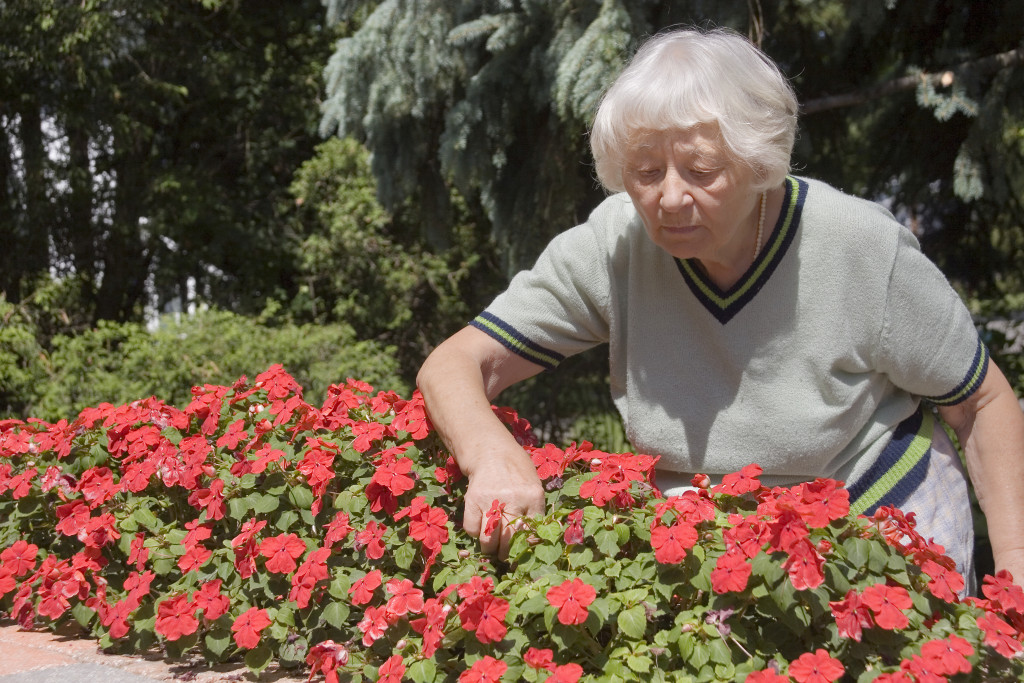Social and therapeutic horticulture uses plants and gardens to enhance one’s health and quality of life and interaction and cognitive abilities. Landscaping and gardening is a versatile medium that has the power to alter people’s lives, and studies have personally seen how it benefits people of all ages and abilities.
Therapeutic horticulture utilizes gardening as a haven for people to learn social skills, establish new friends, and gain valuable practical knowledge that will help them become more self-sufficient in the future. The benefits of spending time and engaging in physical activity near mother nature are numerous. There is compelling evidence to show that spending time outdoors relieves stress, improves mood, and leaves us feeling better about ourselves.
Garden Design That’s Easy to Get Around
For therapeutic gardens to have the label of “accessible,” they must satisfy specific requirements. A landscape construction expert understanding local and state ease of access rules can help with garden design. There is a lot more that happens when planning these arrangements than just following the rules. It can take months to design a modest garden, up to a year or more for a more significant endeavor, from choosing plants and seedlings to shades, materials, fragrances, and noises (and sometimes taste).
A Garden’s Therapeutic Effects
Even the simplest practice of engaging with nature, such as looking at forests or exploring gardens, can have profoundly restorative effects. In a study, patients recovering from surgery who viewed trees from their hospital windows recovered faster than those who only had walls. Tree-viewing patients had shorter hospitalizations, fewer problems, and needed less pain medication. They also received lesser negative chart comments from doctors and nurses.
One research found that just looking out over a garden from a terrace lifted people’s spirits, regardless of whether they were depressed or not. However, going to the garden and taking a walk or sitting down in it had a more significant impact. Respondents said they were less sad, had better moods, sleep, attention, and inner peace, and sometimes were filled with hope. Symptoms of dementia and Alzheimer’s disease such as anger and restlessness can be eased and reduce the need for “as-needed” drugs by spending time in gardens.
Plant Care Has Advantageous Effects
Greenery in interior living quarters, such as those in outside gardens, can lift your mood and make you feel better about yourself. There are several advantages to taking care of a living plant, even if it is only a lone houseplant. Taking care of plants can help individuals deal with difficult situations that negatively impact their physical and mental well-being.
An assisted-living facility assigned the tenants responsibility for a plant and taught indoor gardening care in a class lasting four weeks. Indoor gardeners had considerably higher self-ratings of healthiness, life quality, and happiness than non-gardening individuals.

In addition, employees saw that the gardeners needed less attention and were more aware and sociable. Indoor gardening also proved to help people living with dementia relax and sleep better and improve their overall mental clarity.
Community Gardening Has Healing Powers
Gardeners frequently indicate a decline in anxiety, tension, and stress when evaluating the rewards of their labor. This isn’t just a hunch, as evidenced by the available research. In one study, participants completed a mentally taxing activity, and then researchers evaluated levels of the stress hormone cortisol in their bodies. They had reading and gardening periods after. Although there were decreased cortisol levels in both groups, the gardening group had substantially lower ratings, suggesting more physical stress relief. They also stated that their spirits improved significantly.
Gardening and food production, especially when done collaboratively, has significant advantages. Benefits show improved cooperation, self-esteem, coping skills, problem-solving, planning abilities, social engagement, and a lifelong enthusiasm for community work and gardening.
Projects for the Garden
Volunteer-run garden initiatives can range from tiny, informal locales to huge organizations and charities with full-time personnel. Projects can have their own location or share resources, such as a garden center or greenhouse. Hospital and prison facilities sometimes include gardening initiatives.
Final Thoughts
The Centers for Disease Control and Prevention define community gardens as cooperative enterprises on public open areas where people work together to maintain and produce the plants, including nutritious and reasonably priced fresh produce. Thus, helping combat loneliness. Many individuals find it challenging to socialize after retiring, and community gardens can be a great way to meet new people and help your neighborhood at the same time.
